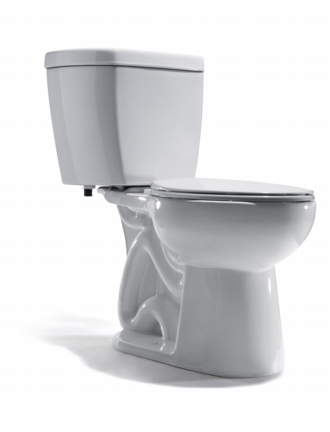The new low flush toilets, besides contributing to less energy use and water conservation, are actually more pleasing to use. After installing one in my home, I was surprised how a conventional toilet annoyed me with it's lengthy water swirling and noise. It really hit home how poorly engineered these older toilets are.
Blog Post
Saving Energy by Conserving Water

It takes a lot of energy to transport and treat water in this country, and it takes a lot of water to produce the energy we use. To put this a different way: when we save water we save energy, and when we save energy we save water. Most people don't think about this tight-knit relationship between energy and water, but public officials in a growing number of regions around the country are becoming quite aware of it.
The amount of energy needed to deliver clean water and treat that water once we've used it varies tremendously by region. If you live in southern California, your drinking water is pumped either from the Colorado River and its assorted reservoirs (including the nation's largest, Lake Mead, which is now half empty) or from northern California. In either case, that water flows through hundreds-of-miles-long open aqueducts and, via pipelines, up and over mountain ranges.
Averaged statewide, roughly 5% of California's electricity is used for moving and treating water and wastewater. (The oft-quoted figure of 19% includes water heating and other things we do with water in homes, businesses, and farms.) But these figures vary widely in different parts of the state. A 2005 report from the California Energy Commission found supply and conveyance of water to range in intensity from 0 to 16,000 kilowatt-hours per million gallons (kWh/MG), while filtration and treatment varied from 100 to 1,500 kWh/MG, distribution varied from 700 to 1,200 kWh/MG, and wastewater collection and treatment varied from 1,100 to 5,000 kWh/MG. Not surprisingly, average totals are far higher in southern California (12,700 kWh/MG) than in northern California (3,950 kWh/MG).
This issue isn't limited to California. Nationwide, roughly 4% of total power generation is dedicated to pumping and treatment of water. For many cities and towns around the country, this is the largest single user of electricity. Water filtration plants and sewage treatment plants are very energy intensive. In places where desalination is needed, the energy-intensity of drinking water rises dramatically.
On a per-capita basis, this energy use for water varies from about 350 kWh/year in the South Atlantic states to over 750 kWh/year in the Mountain states, according to a 2006 report by the U.S. Department of Energy. (Here in New England, each of us uses just under 400 kWh/year, on average.) This means, for a lot of us, our domestic water accounts for about as much electricity as our refrigerator. For most homeowners, the energy-intensity of water use is hidden in water and sewer utility bills, while those of us in rural areas who have our own water systems and onsite wastewater systems pay those energy costs directly.
If you have a really deep well, water pumping costs can be one of your largest electricity demands. And while gravity-flow wastewater disposal systems (in-ground septic tanks and leach fields) use little if any energy, some of the newer "aerobic" treatment systems that work in places without suitable soils for standard in-ground systems have pumps that operate 24/7, consuming as much electricity, annually, as four or five refrigerators.
SUPPORT INDEPENDENT SUSTAINABILITY REPORTING
BuildingGreen relies on our premium members, not on advertisers. Help make our work possible.
See membership options »The bottom line is that because there's a lot of energy "embodied" in the water we use, we should conserve water in order to save energy. In fact, in some places, such as California, energy conservation programs provide rebates on water-conserving appliances and plumbing fixtures such as toilets and irrigation-control systems, even if those products do not use energy directly. Any conservation measure that reduces hot water use, such as low-flow showerheads, front-loading clothes washers, and efficient dishwashers, will directly save energy by reducing the amount of water we have to heat.
A good starting point in saving energy by reducing water use is to look for WaterSense-listed products whenever shopping for a product covered by the EPA WaterSense program.
Published August 24, 2010 Permalink Citation
(2010, August 24). Saving Energy by Conserving Water. Retrieved from https://www.buildinggreen.com/blog/saving-energy-conserving-water
Comments
You are making a very good po
You are making a very good point here.
There are a lot of people that are not aware of the tight relationship between energy and water and this is why they are using a lot more water thn they really need.



Add new comment
To post a comment, you need to register for a BuildingGreen Basic membership (free) or login to your existing profile.